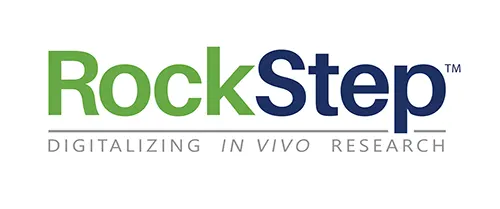
CEO
RockStep Solutions
1. What is Climb, and how does it support in vivo drug discovery?
Climb is a SaaS collaboration suite for managing in vivo laboratory research operations and data. As a native-cloud platform, Climb is used by all members of the in vivo teams including scientists and study directors as well as laboratory technicians and animal care takers. Scientists use Climb to design their studies and provide detailed instructions to lab technicians. Study directors use Climb to manage all aspects of the laboratory workflows and scheduling. At the lab bench, technicians use climb to guide their work and capture experimental data. Climb improves laboratory efficiencies, and tracks aggregates, harmonizes, and stores data securely while reducing data silos and improving collaboration.
Climb’s adaptability allows it to be species-agnostic, support any disease related research, and can easily scale as research organizations grow.
The in vivo research phase of drug development presents a lot of unique challenges that have been difficult to address with previous software solutions. Researchers have been trying to adapt ELNs, generic LIMS, or other tools such as spreadsheets and share folders to address the in vivo research data challenges, without great success.
Climb was developed under Julie Morrison’s leadership, in partnership with Novartis, UCSF, and a large public Biotech. Julie worked with their in vivo study teams using a 4P Developmental Process (Proof of Concept, Prototype, Pilot, and Production) and the Pistoia Alliance’s UXLS tool kit to ensure that the Climb platform was designed by the scientists and actually meets the needs of in vivo researchers.
With Climb, RockStep provides a scalable, complete solution that addresses the entire spectrum of challenges in one integrated package. RockStep helps their customers take control of their research and data. Climb helps get science done more effectively and helps get the right drugs to market faster.
2. What is the difference between in vitro and in vivo testing for drug discovery?
In vivo is a Latin term meaning “in the whole body,” and means active testing on live test subjects (typically mice and rodent models). Because in vivo testing uses live animals, it faces incredibly strict compliance requirements to ensure animal welfare standards are being upheld and is very time-consuming.
In vitro is another Latin term meaning “in the glass.” This type of testing doesn’t require live subjects, instead an artificial testing environment is created by transplanting organic cells into testing vessels (such as petri dishes). Tests are then conducted on the cells instead of in a live animal.
While in vivo testing primarily focuses on the pharmacokinetics of a compound in a living organism with a focus on drug metabolism, safety, and efficacy; in vitro testing focuses on how a compound interacts at the cellular level.
In vitro testing is widely used to narrow down new compounds moving through the drug discovery pipeline. Think of in vitro testing as the gateway to more expensive and more involved in vivo testing. If a testing compound fails in vitrotests, then it would not move forward to in vivo tests. It is not accurate to consider one better than the other; they are complementary. Both forms have firm places in the modern biomedical and pharmaceutical research industries.
In vivo testing is also the final testing phase a compound must undergo before it qualifies for submission to the Food and Drug Administration (FDA) for approval for the first phase of human clinical trials. The effects of testing compounds can be very different in a live animal compared to cells in a petri dish, sometimes revealing negative side effects or other issues that mean the compound is not safe to test in humans. The FDA has even stricter requirements around safety and efficiency standards for compounds tested in humans and in vivo testing is essential to prove the compound is worth progressing to human clinical trials.
3. How has your experience as an entrepreneur in Maine informed your company’s direction and success?
Maine has a very supportive entrepreneurial community. RockStep launched in 2015 with funding from the NIH. After receiving the initial go-ahead from NIH, RockStep joined the Maine Top Gun program, which provided basic business guidance designed for early-stage companies. The Maine Technology Institute has been instrumental to our company in providing early-stage financing and help with grant writing. The excellent MTI grant writing support helped RockStep secure significant funding from the NIH.
As a life sciences company, RockStep’s connection with the Jackson Laboratory have been very important to our company both as a customer and a source of inspiration. RockStep’s CEO, Chuck Donnelly, was Director of Computational Sciences at JAX (a Maine based company) where he developed an understand of how grant funding works with the NIH and learned about animal model research and the challenges of managing in vivo data and operations.
RockStep’s connections with Maine and JAX have helped us develop many industry connections and credibility with the NIH. A number of RockStep’s customers know about the high-quality research conducted at JAX which helped us get in the door before we had a lot of market exposure.
Challenges we had to overcome, as a life science company in Maine, included recruiting talent and traveling to customer locations, primarily in Boston and the San Francisco Bay Area. These challenges were mitigated by establishing our offices in Portland where it is an easy drive to Boston and access to PWM for air travel. Portland is also a destination for tech and life-sciences professionals who don’t want to live and work in the hustle of a big city like Boston.
4. What resources, partners, and companies have been helpful to RockStep Solutions as it has continued to grow?
Startups rely on entrepreneurial resources, and business partners to develop and grow. For RockStep, the entire Climb application was developed with many academic and industry partners.
- The Maine Technology Institute (MTI) has been a tremendous resource for RockStep in providing financing at critical junctures and helping with resources to write NIH grants.
- Dr. Prusiner’s (Nobel Laureate) Institute for Neurodegenerative Diseases (IND) at UCSF partnered with RockStep at the company’s earliest days providing funds through development contracts and access to their laboratory staff to develop and test requirements. RockStep continues to work closely with the IND and they are a reference customer.
- RockStep formed a science team to help design Climb with UCSF, Novartis, and a large public BioTech. All three institutions helped provide RockStep with use-cases, design reviews, and product testing resources to ensure that Climb provides novel functionality and meets the needs of the laboratory scientists.
- The Jackson Laboratory has been a tremendous asset to RockStep in helping the company define the product use cases that meet their research needs (which are the needs of the broader community).
- RockStep developed an important relationship with Dotmatics corporation. Dotmatics provide complimentary software for biomedical research. RockStep and Dotmatics are now co-sell partners delivering and deploying Climb and Dotmatics as an integrated solution for drug discovery.
- RockStep continues to work closely (and confidentially) with industry partners in developing and testing product requirements.
This is a short list of key partners RockStep is working with. As we grow, we are nurturing other business partnerships, primarily as channel partners.
5. What are your plans for growing Rock Step Solutions in the next few years?
RockStep’s vision is to be the world leader in SaaS software for managing in vivo research operations and data. As such the company plans to continue its market strategy in the US and move into Europe. RockStep will continue to grow its workforce primarily in the Portland Maine area as we expand our market and need more technical, support, science, and sales staff.
In three years, we envision that RockStep will employ about 60 full time employees with about 80% of the staff being Maine residents.
By submitting this form, you are consenting to receive marketing emails from: . You can revoke your consent to receive emails at any time by using the SafeUnsubscribe® link, found at the bottom of every email. Emails are serviced by Constant Contact
Last modified: May 2, 2022






